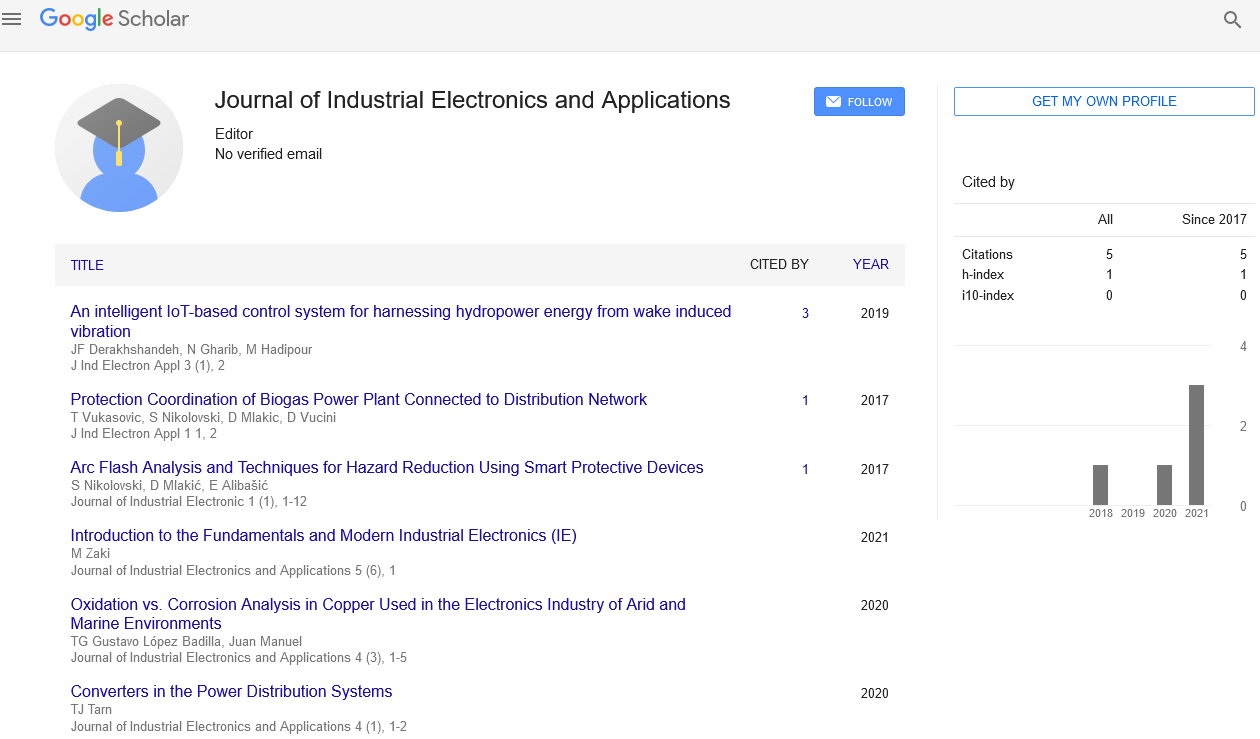Short Communication, Vol: 7 Issue: 3
Automotive Technology Innovation and Impact on the Industry
Adam John*
1Department of Energy Science and Engineering, Khulna University, Khulna, Bangladesh
*Corresponding Author: Andrew Nichola,
Department of Energy Science and
Engineering, Khulna University, Khulna, Bangladesh
E-mail: adamjohn123@gmail.com
Received date: 05 September, 2023, Manuscript No. JIEA-23-117726;
Editor assigned date: 07 September, 2023, PreQC No. JIEA-23-117726 (PQ);
Reviewed date: 21 September, 2023, QC No. JIEA-23-117726;
Revised date: 29 September, 2023, Manuscript No. JIEA-23-117726 (R);
Published date: 06 October, 2023, DOI: 10.36648/JIEA.1000041
Citation: John A (2023) Automotive Technology Innovation and Impact on the Industry. J Ind Electron Appl 7:3.
Abstract
Description
The automotive industry has experienced a remarkable transformation in recent years, propelled by rapid advances in automotive technology. Innovations in propulsion, connectivity, safety, and automation are changing the way we drive and the vehicles we drive. The diverse facets of automotive technology, its impact on the industry and society, and the promising future it holds [1-3].
The evolution of automotive technology
The shift towards Electric Vehicles (EVs) is one of the most significant trends in automotive technology. Electric motors, powered by lithium-ion batteries, have gained momentum due to their environmental benefits, improved energy efficiency, and reduced dependence on fossil fuels. Companies like and General Motors have played a pivotal role in popularizing EVs. Modern vehicles are increasingly connected to the internet and to each other. This has given rise to the "connected car," which can access real-time traffic data, provide entertainment, and offer over-the-air updates. Additionally, Vehicle-to-Vehicle (V2V) and Vehicle-to-infrastructure (V2I) communication systems are paving the way for safer and more efficient transportation [4,5].
ADAS technologies are transforming safety and driver experience. Features like adaptive cruise control, lane-keeping assist, and autonomous emergency braking are making driving safer and more convenient. Self-driving cars are no longer a distant dream. Companies like and traditional automakers are testing autonomous vehicles on public roads. The realization of fully autonomous cars could reshape transportation, reduce accidents, and provide mobility for those who cannot drive. Automotive technology is influencing vehicle design and materials. Lighter materials like carbon fiber and aluminum reduce fuel consumption and improve performance. 3D printing and other manufacturing advancements are changing the way vehicles are built. Impacts and Benefits of Automotive Technology. Electric vehicles produce zero tailpipe emissions, reducing air pollution and carbon footprints. Automotive technology is a critical driver in the transition to a more sustainable future. ADAS technologies have made significant contributions to reducing accidents and saving lives. As these technologies become more advanced and widespread, the potential for even safer roads is on the horizon. Connectivity and automation make driving more convenient. Features like adaptive cruise control and lane-keeping assist reduce driver fatigue, while infotainment systems provide entertainment and connectivity on the go [6-8].
Automotive technology is a force of innovation, transforming the way we move and the vehicles we use. The shift towards electric vehicles, the increasing connectivity of cars, and the promise of autonomous driving all contribute to a future where transportation is not only more efficient but also more environmentally responsible and safer. The automotive technology sector has created jobs and economic growth. The development of electric vehicle infrastructure, autonomous vehicle technologies, and mobility services has generated new opportunities and industries. As we embrace these changes, addressing the challenges and ethical considerations that arise with new technologies will be essential to creating a balanced and prosperous future for the automotive industry and society as a whole [9,10].
References
- Skokov VV, Illarionov AY, Toneev VD (2009) Estimate of the magnetic field strength in heavy-ion collisions. Int J Mod Phys A 24: 5925-32.
- Lin H, Penn MJ, Tomczyk S (2000) A new precise measurement of the coronal magnetic field strength. Astrophys. J. 541: L83.
- Freitas PP, Ferreira R, Cardoso S, Cardoso F (2007) Magnetoresistive sensors. J Condens Matter Phys 19:165221.
- Tsang C (1984) Magnetics of small magnetoresistive sensors J. Appl. Phys 55: 2226-31.
- Mapps DJ (1997) Magnetoresistive sensors. Sens Actuator A Phys 59: 9-19.
- Taton K, Johnson D, Guire P, Lange E, Tondra M (2009) Lateral flow immunoassay using magnetoresistive sensors. J Magn Magn Mater 321: 1679-82.
- Xie F, Weiss R, Weigel R (2015) Hysteresis compensation based on controlled current pulses for magnetoresistive sensors. IEEE Transactions on Industrial Electronics 62: 7804-9.
- Alfadhel A, Khan MA, Cardoso S, Leitao D, Kosel J (2016) A magnetoresistive tactile sensor for harsh environment applications. Sensors (Basel) 16: 650.
[crossref] [Google Scholar] [PubMed]
- He DF, Shiwa M (2011) An anisotropic magneto resistive sensor with set/reset field. Rev Sci Instrum 82: 094703.
[crossref] [Google Scholar] [PubMed]
- Han J, Hu J, Ouyang Y, Wang SX, He J (2014) Hysteretic modeling of output characteristics of giant magnetoresistive current sensors. IEEE Trans Ind Electron IEEE T IND ELECTRON 62:516-24.
 Spanish
Spanish  Chinese
Chinese  Russian
Russian  German
German  French
French  Japanese
Japanese  Portuguese
Portuguese  Hindi
Hindi 